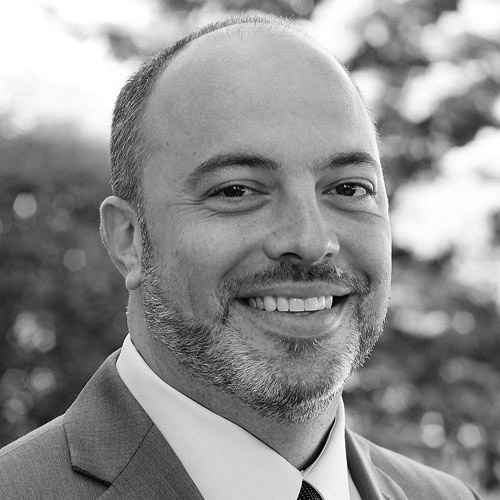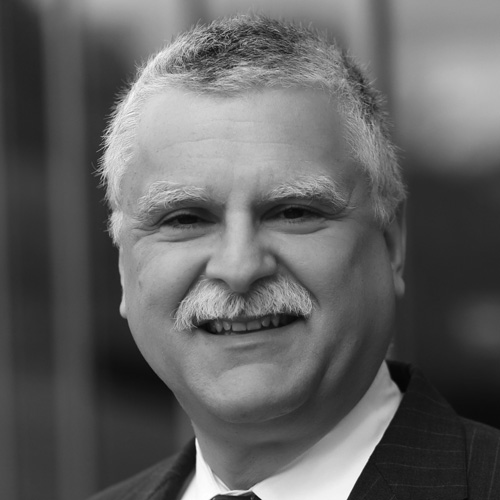In Eric Anyah’s role as chief financial officer at one of the largest museums in the US, the worlds of art and finance collide daily, and that couldn’t be more fitting. Anyah’s path to the Museum of Fine Arts, Houston (MFAH) is grounded in experience in both realms. Originally from Nigeria, Anyah earned a bachelor’s degree in art history and architecture from the University of Illinois at Chicago. Happenstance took the form of one elective accounting course, which inspired Anyah to switch gears and earn a master’s degree in accounting as well as a certified public accountant qualification. || When he was recruited as the Art Institute of Chicago’s budget director, one of the recruitment visits was with then-director Jim Wood. Wood took one look at Anyah’s résumé and got very excited. “Jim felt I was the perfect person for the position because of my art history and architecture background,” Anyah says. “I took the job, and the rest is history.” Here, Anyah talks to Profile about what it takes be a museum’s chief financial officer, leaving Chicago for Houston, and MFAH’s recent campus expansion.
Does the type of organization you work for dictate your approach as chief financial officer?
Eric Anyah: To a large degree, yes. There are many aspects to the CFO job that are universal, but each organization and industry segment is different. As CFO, your approach has to be flexible enough to effectively recognize and work within the context of your organization.
Although most CFOs in the tax-exempt space would still be highly interested in the concept of return on investment (ROI), our approach may differ from a for-profit entity. For me, I always look to evaluate all of our programs based on this concept, but not strictly or necessarily through a monetary lens. Recognizing that there is a scholarly or academic aspect to our mission, often the ROI is based on assessing how impactful those programs are using a host of metrics. Did we reach the most people? Did the program enhance our reputation? Did it help us build alliances that will pay off in the future?
Given that your concerns are so different from the private sector, it makes sense that your approach has to be entirely different as well.
Anyah: I think the one aspect that differentiates an art museum is that, especially with respect to major acquisitions, the singular, unique nature of certain works requires the CFO to work well with the director on being decisive when works come up for acquisition. Great works come up so rarely and are at the heart of our mission, so you can’t always use the same investment prism you would toward other tangible assets. I don’t think most people outside the museum world know that almost none of the major museums capitalize their collections. The most significant aspect of our asset base is not even reflected in our balance sheet.
Your move from the Art Institute of Chicago to the Museum of Fine Arts, Houston, received a lot of press attention. Why was it the right decision for you?
Anyah: The Art Institute was, and remains, a great organization, and a fantastic institution with dedicated people doing wonderful work. I will always be very grateful for my time there. My family and I love Chicago and have many friends there. After ten years at the Art Institute, I really felt my work was done. The job here in Houston is substantially different from that in Chicago. At the Art Institute, our focus was always strengthening and fortifying our balance sheet as well as managing risk. Those are very important considerations when you have a large debt portfolio and a defined benefit pension plan. Here at Houston, we already have a fortress balance sheet. So yes, we also focus on risk, but the goal and emphasis is to build the income statement by diversifying our sources of revenue and creating effective operating processes.
Tell me about MFAH’s campus expansion. What are the biggest challenges during this growth period?
Anyah: A highly influential reason for taking this job was to have a chance to participate in another campus expansion. Few people have the good fortune to do this twice, and I was involved with the construction aspects of the Modern Wing at the Art Institute. What makes this project so important is that it unifies our fourteen-acre campus. The core plan includes The Nancy and Rich Kinder Building (a new 164,000-square-foot building for twentieth- and twenty-first-century art), and a new 80,000-square-foot home for the Glassell School of Art. We also intend to construct the state-of-the-art Sarah Campbell Blaffer Foundation Center for Conservation. The project will transform not only the museum, but also its surrounding neighborhood by making a major contribution to Houston’s overall efforts to improve the city’s pedestrian experience.
In your current role, you communicate directly with guest services and the gift shop. Why is this important to you?
Anyah: The decision for me to oversee the earned income components of the museum—guest services, memberships, the museum shop, and special events—is consistent with our broader strategic objective at the museum. I spend a substantial part of my time on these activities. Often it is just looking at our processes and how we can better engage with guests. Broadly, the goal is always to leverage our wonderful programs to improve guest experience and foster repeat visits from members. For me, the math is quite simple: the more people who visit the museum, the higher our earned income.
What initiatives are you currently driving at MFAH?
Anyah: We have a host of ongoing initiatives aimed at improving our processes in certain key areas. One area we continue to perfect is our budget process. In my first year at the museum, we introduced the responsibility-centered approach to budgeting with the goal of allowing outcomes to be participatory and transparent. To oversee the process, we created a budget committee, chaired by the director and CFO, as well as the director of human resources, the chief operating officer, and the chief development officer. The process has been a lot more fluid this year, and we now have the framework to assess our longer-term budget issues as we prepare for an expanded campus. We also have several IT initiatives, including a project to replace our twenty-year-old accounting software with a new enterprise resource planning system. Overall, there are many items at play at the museum, and it is an exciting time to be at Houston.















